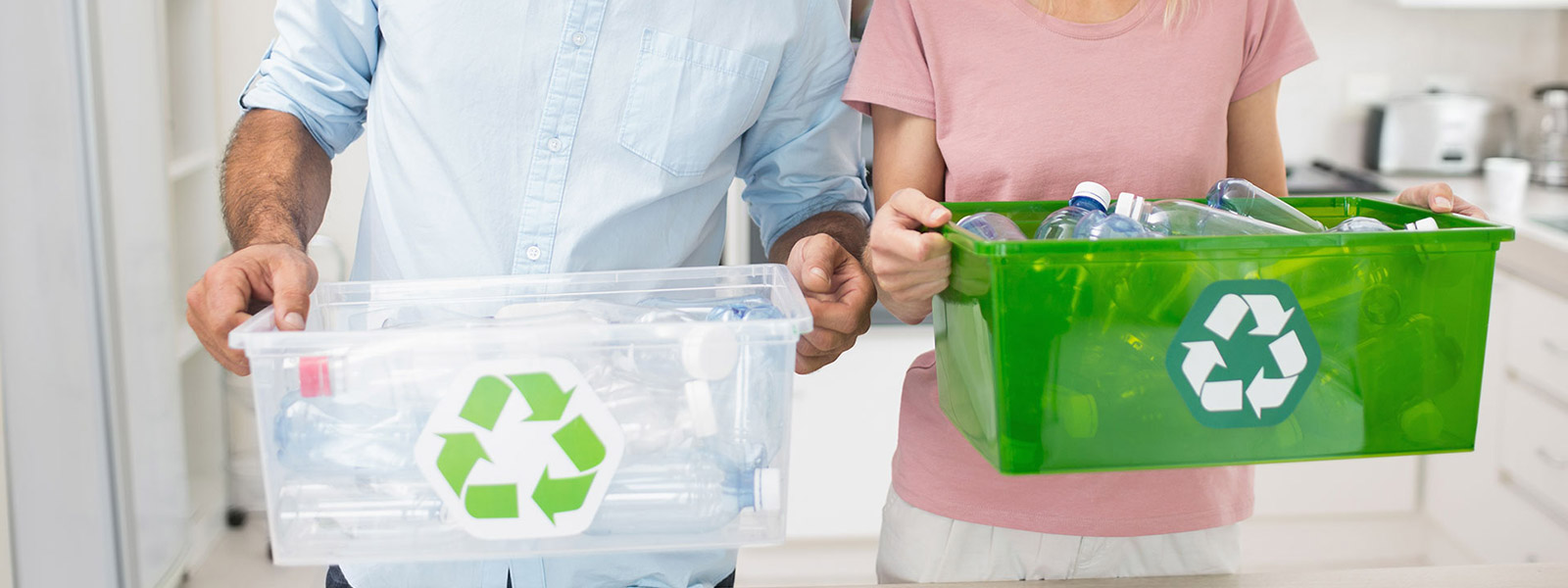Sustainable Fashion: Ways to Recycle Your Old Garments
Posted on 15/06/2025
Sustainable Fashion: Ways to Recycle Your Old Garments
Sustainable fashion is much more than just a passing trend. It's a mindset, a lifestyle, and a commitment to reducing our personal and environmental impact. As awareness of the fashion industry's environmental footprint grows, more people are seeking innovative ways to extend the life cycle of their clothing. In this comprehensive article, we'll explore creative, practical, and effective ways to recycle your old garments and contribute to a more sustainable world.
Why Embrace Sustainable Fashion?
Every year, millions of tons of textiles end up in landfills. The fast fashion industry encourages overconsumption and frequent discarding, contributing to pollution, water waste, and carbon emissions. By responsibly recycling, reusing, and upcycling your old garments, you can significantly reduce your carbon footprint and inspire others to follow the path of eco-friendly apparel.
Environmental Impact of Textile Waste
- Over 85% of clothing in the United States is sent to landfills or incinerated.
- Textile production consumes massive amounts of water and energy.
- Cheap synthetic fabrics release microplastics into our oceans.
- Dyes and chemicals used in garment manufacturing can pollute rivers, lakes, and soil.
Choosing sustainable fashion isn't merely about style; it's about responsibility. Recycling old garments is a simple yet impactful step toward a cleaner, greener planet!

1. Donate to Charities and Shelters
Donating your gently used clothing is one of the most direct ways to give your old garments a second life while helping those in need. Many organizations accept clothes for various causes, including:
- Local charities and churches
- Women's and homeless shelters
- Refugee support centers
- Natural disaster relief campaigns
Tip: Only donate clean, wearable items. Clothing that is damaged or too worn may be better suited for other recycling options.
2. Host a Clothing Swap
Organizing a clothing swap with friends or your community is a fun and sustainable way to refresh your wardrobe. Not only do you prolong the lifespan of each garment, but you also get the thrill of "shopping" for free!
- Arrange an event where participants bring garments they no longer want.
- Set rules to ensure clothes are clean and in good condition.
- Swap, share, and find new favorites while reducing textile waste!
3. Sell Your Old Clothes Online
If you have high-quality or designer items, consider selling them via online resale platforms. This is a smart way to recycle garments and earn extra cash.
- Popular platforms: Depop, Poshmark, ThredUP, eBay, and more.
- Specialty sites exist for luxury or vintage pieces.
- Take clear, well-lit photos and write honest descriptions.
Digital selling supports the circular economy, keeping clothing in use and out of landfills!
4. Upcycle and Repurpose Clothes Creatively
Upcycling old clothes is one of the most exciting aspects of sustainable fashion. By transforming retired garments into entirely new items or accessories, you reduce waste and unleash your creativity! Here are some ideas:
- Turn T-shirts into tote bags: Cut and sew or use no-sew methods to create reusable shopping bags.
- Transform jeans into shorts or skirts: Give tired denim a new look for summer.
- Patch up jackets and pants: Use fun fabric scraps or embroidered patches to cover stains and holes, giving a unique, personalized touch.
- Make quilts or blankets: Piece together favorite shirts, dresses, or children's clothes for a sentimental keepsake.
- Cut garments into cleaning rags: Soft cotton can be reused for household dusting and cleaning jobs.
- Create pet bedding or toys: Old sweaters and tees make great stuffing or covers for DIY pet projects.
Remember, upcycling is an art. No skill is too small!
5. Take Advantage of Brand Take-Back and Recycling Programs
Many forward-thinking fashion brands have introduced garment take-back and recycling programs. Some of these initiatives allow you to bring old clothes--regardless of brand--to be recycled into new fibers or responsibly disposed of.
- H&M's Garment Collecting Initiative: Drop off any textiles at their stores worldwide.
- Levi's: Offers a denim recycling program for old jeans.
- Patagonia's Worn Wear: Collects old gear for repair and resale.
- The North Face "Clothes the Loop": Accepts used clothing and shoes for recycling.
Check with your favorite brands--many have store-based programs that reward you with discounts, loyalty points, or gift cards for participating.
6. Find Local Textile Recycling Facilities
Not all clothing is suitable for donation or resale, especially stained, torn, or heavily worn-out items. However, these garments can still be recycled! Textile recycling facilities process old clothes into industrial insulation, carpet padding, stuffing, or even new fabrics.
- Search online for "textile recycling near me" or utilize municipal resources to locate nearby facilities.
- Drop clothes into designated textile recycling bins at local stores, parking lots, or community centers.
Even if your garments seem beyond repair, recycling prevents them from ending up in landfills!
7. Compost Natural Fiber Clothing
If you have clothing made from 100% natural fibers such as cotton, linen, hemp, or wool (with no synthetic blends, dyes or finishes), these items can be composted at home.
- Cut the garment into small pieces for faster breakdown.
- Remove buttons, zippers, and non-compostable trims.
- Add the fabric to your compost pile or bin, mixed with other organic matter.
Composting clothing ensures that your garments return to the earth without polluting the environment!
8. Support and Buy Recycled or Upcycled Fashion
The sustainable fashion revolution isn't just about recycling your own clothes--it's also about making conscious purchasing choices. Many independent and mainstream brands now feature:
- Recycled fabrics: Clothes made from recovered textile fibers, plastic bottles, or post-consumer garments.
- Upcycled fashion: Designers creatively rework discarded fabrics or old stock into trendy new pieces.
- Secondhand marketplaces: Thrift stores, vintage boutiques, and consignment shops offer quality, affordable options that extend garment lifespans.
By supporting circular fashion, you help reduce demand for resource-intensive production and encourage responsible innovation in the textile industry.
9. Educate Yourself and Advocate for Change
Sustainable fashion is a journey that goes beyond individual action. Stay informed about the global impact of clothing waste and the different methods to recycle garments. Share knowledge with friends and family--collective action brings lasting change!
- Follow sustainable fashion blogs and influencers to stay inspired.
- Participate in community clean-ups or clothing drives.
- Support legislation for producer responsibility, textile recycling, and garment worker rights.
Remember, every recycled shirt or pair of jeans counts toward a brighter future.
10. Rethink Your Wardrobe Habits
The most effective way to advance sustainable fashion is to practice mindful consumption. Before buying new clothes, ask yourself:
- Do I really need this item?
- Will it last through multiple seasons and trends?
- Can I repair or update something I already own?
Adopting a capsule wardrobe, choosing timeless and versatile pieces, and caring for your garments properly all support garment longevity and sustainability. Buy less, but choose well!

Common Questions About Recycling Old Clothes
What clothes can I recycle?
Most textile recyclers accept all types of garments, but certain materials (like heavily soiled, wet, or oil-soaked fabric) cannot be processed. Always check with your local recycling facility or program guidelines.
What happens to recycled clothing?
Recycled textiles can be turned into new fibers for clothes, insulation, rags, stuffing for furniture, and even building materials. The goal is to keep textiles out of landfill and in circulation for as long as possible.
Does donating clothes really help?
Absolutely! Donating clothes extends their useful life and provides for those in need. However, try to donate only clean, wearable items, and be mindful of overburdening local charities.
Conclusion: Your Role in the Sustainable Fashion Movement
Practicing sustainable fashion by recycling, donating, and upcycling your old garments is not only eco-friendly but also financially and socially rewarding. Every action you take reduces environmental impact, conserves resources, and transforms waste into value.
Let's embrace a more conscious approach to fashion and inspire others to do the same. Together, we can create a cleaner planet and a more ethical industry--one recycled garment at a time.
Ready to start your sustainable fashion journey? Choose one of these creative ways to recycle your old garments today and make a lasting difference!

 020 3409 4688
020 3409 4688 020 3409 4688
020 3409 4688




 House clearance
House clearance Waste Removal
Waste Removal Here at Rubbish Collection we offer an efficient and affordable house clearance at the best price. We can perform full domestic clearance in London, removing...
Here at Rubbish Collection we offer an efficient and affordable house clearance at the best price. We can perform full domestic clearance in London, removing... Waste can accumulate quickly and before you know it, it’s everywhere and taking up lots of space. If you would like it professionally removed, hire Rubbish Collection for the...
Waste can accumulate quickly and before you know it, it’s everywhere and taking up lots of space. If you would like it professionally removed, hire Rubbish Collection for the...





